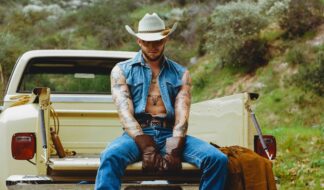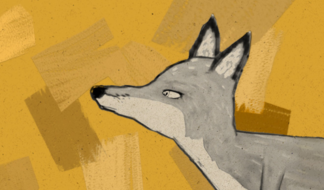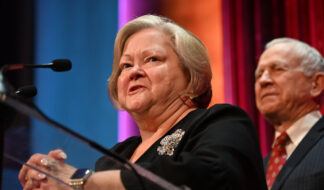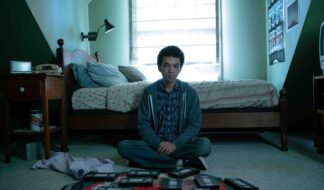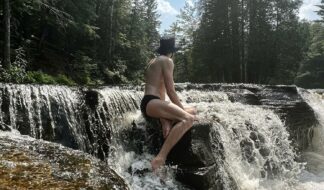50 Facts, 50 Years Later: What You Should Know About Christopher Street Detroit ‘72
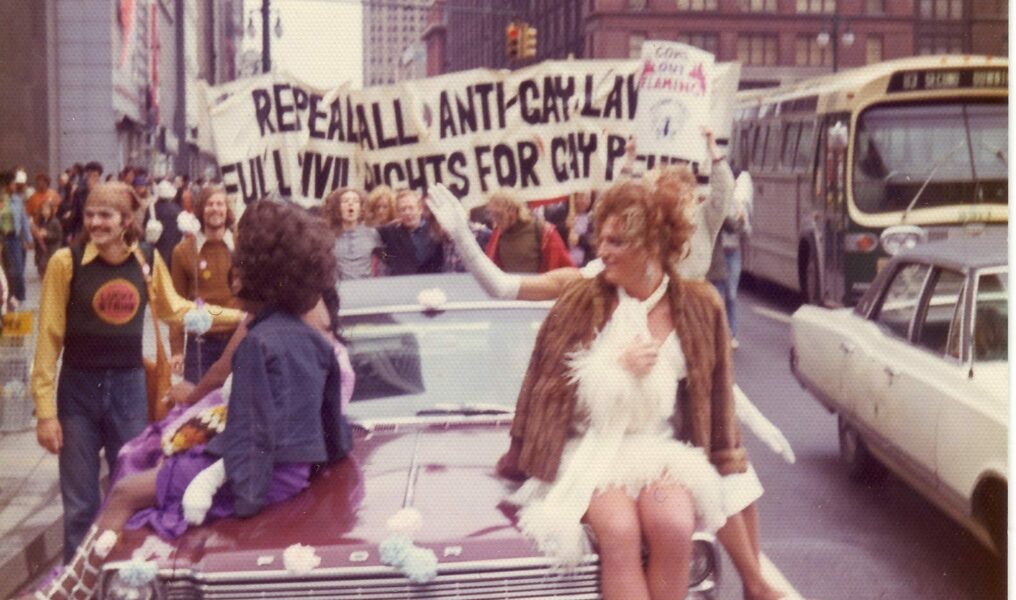
This summer marks a milestone anniversary, yet most people don’t realize there’s an anniversary to mark.
A half century ago, Michiganders who united in a bond of sexuality and gender that diverged from the so-called norm — those we now include under the umbrella of LGBTQ+ community — celebrated Pride en masse for the first time. They did so with dances and picnics and films, they did so with a drag pageant, and they especially did so with a march and rally in Detroit.
The celebration was also a collective assertion of visibility.
To bring this story to life, Ypsilanti freelance illustrator Isabel Clare Paul and I have created a full-color comic book entitled “Come Out! In Detroit,” based on eyewitness accounts. The comic book will be distributed free at various events and locations over the summer.
The project is made possible by a Michigan Humanities Grant, by more than 100 contributions to our GoFundMe campaign, and a smaller number of vital private and institutional donations.
For those of us whose nerdiness veers as much to “Jeopardy!” as it does to “Wonder Woman” or “The Avengers,” here are 50 facts you ought to know about Michigan’s first Pride 50 years ago:
1. Christopher Street Detroit ’72 was the first-ever Pride celebration in Michigan, held in June 1972, with events in Ann Arbor, Greater Lansing and Detroit.
2. Christopher Street Detroit ’72 drew its name from the location of the Stonewall Inn at 53 Christopher Street in New York.3. The contact address for Christopher Street Detroit ’72, Box 631-A, was the very same post office box that Wayne King, also known as Wayne Pierce, used in his December 1969 classified ad in the Fifth Estate announcing the formation of the Detroit Gay Liberation Front.
4. Sunny King, first editor of the Gay Liberator and early chair of the Detroit GLF, was one of the speakers at Chicago’s first Pride celebration in June 1970.
5. The initial impetus for Christopher Street Detroit ’72 came from Gay Whiteside, leader of the local chapter of the Daughters of Bilitis, who was disappointed that Pride events took place in New York, Chicago and Los Angeles in 1971 but nothing had been held in Detroit.
6. The main organizing was done under the umbrella of the Michigan Gay Coalition, a pioneering association of groups from around the state.
7. Formal planning began in March 1972 and included the Ann Arbor Gay Liberation Front, the Battle Creek GLF, the Detroit Gay Activists, Detroit Gay Youth, the Gay Liberator, the Kalamazoo GLF, Metropolitan Community Church of Detroit, the Michigan State University Gay Liberation Movement, the Mt. Pleasant GLF, ONE in Detroit, the Wayne State GLF and the Western Michigan Gay Alliance out of Grand Rapids.
8. The Gay Liberation student groups at Michigan State, the University of Michigan and Wayne State played particularly crucial roles with preparation and participation.
9. Merrilee Melvin received $25 a week for work as paid organizer for the event.
10. Demands of the march were twofold: Repeal All Anti-Gay Laws and Full Civil Rights for Gay People.
11. ONE in Detroit, an organization formed in 1965 whose membership was predominantly male and largely closeted, threatened to pull out of the Michigan Gay Coalition because it viewed the agenda as too “radical.”
12. Promotion for Christopher Street Detroit ’72 included specially printed matchbooks with the schedule of the week’s activities.
13. Dennis Raymond dyed t-shirts lavender and silkscreened them for sale with the words “Come Out” and a butterfly with a clenched fist body, a logo drawn by graphic artist Jay Manning based on an idea from Susan Swope.
14. Morey’s on Michigan Avenue was the only gay establishment in Detroit to refuse to allow publicity for the Christopher Street Detroit ’72 celebration to be distributed in the bar.
15. Rodger Keller sought volunteers from a leather bar called the Voyager Room to act as security for the march but they turned down his request.
16. To raise money, the Wayne State GLF sold apples on campus from a purple custom-built wooden “Gay Fruit Cart” that was later part of the parade.
17. On June 12, 1972, the Ann Arbor City Council passed a resolution proclaiming June 19-25 as Gay Pride Week, the first known official proclamation by a governmental body in the United States.
18. University administrator Jack Breslin denied the Michigan State GLM permission to fly a Gay Pride Week banner at the campus’s Abbot Street entrance.
19. Gay Pride Week also marked the opening of the Green Carnation Community Center, Detroit’s first-ever gay community center, named for specially-tinted carnations worn by followers of Oscar Wilde.
20. At noon on Thursday of Pride Week, the Ann Arbor GLF held a poetry reading outside the Graduate Library on the Diag at the University of Michigan.
21. The MSU GLM hosted a “Miss Capital City” drag contest at Joe Covello’s Bar in Lansing the Thursday night prior to the march, emceed by Alex McGehee and Dan Vigliarolo aka Pattrice.
22. The Ann Arbor GLF had a picnic in the Arboretum the evening before the march.
23. Also on the evening before the march, the Wayne State GLF screened three queer-themed films in the General Lecture Auditorium: “Tricia’s Wedding” featuring the Cockettes, “The Queen” and “Lavender.”
24. In conjunction with the festivities, the Gay Liberator published a special pull-out section called “A Homosexual’s Guide to Detroit,” written by Raymond Warner under the pseudonym Raymond West.
25. Warner urged a boycott of Morey’s for its refusal to support Christopher Street Detroit ’72.
26. The temperature in Detroit at the time of the march was 56 degrees with intermittent light rain.
27. Marchers assembled in Cass Park at noon.
28. The march route ran 1.3 miles, along Temple Street from Cass Park to Woodward Avenue, then down Woodward to Kennedy Square, a plaza located at the convergence of Woodward and Michigan Avenue.
29. Depending on the source, attendance for the march ranged from 200 to 400 participants.
30. The procession was restricted to a single lane of Woodward with a police escort on motorcycles.
31. The turnout included a diverse spectrum of lesbian women, gay men, bisexual folk, people we would now identify as transgender or genderfluid and allies from across the state.
32. Leading the march was Mike Scott aka Aretha, winner of the Miss Capital City pageant, who rode with her court atop the front hood of a brown 1964 Ford Galaxie.
33. Participants carried hand-lettered cardboard signs that read “Speak Well of Gays You May Be Raising One” and “Faggot Power” and “Ho-Ho-Homosexual” and “Black and Beautiful, Gay and Proud” and “Dyke Power” and “Love Is Not a Crime! Free Gay Prisoners” and “I Am a Lesbian and I Am Beautiful” and “Come Out Flaming.”
34. The rally at Kennedy Square included speeches by Don Gaudard of East Lansing, John Morales of Detroit, Jim Toy of Ann Arbor, Susan Swope of Detroit, and Ken Dudley of Detroit.
35. Gaudard had run, unsuccessfully, as an out gay candidate for a seat on the East Lansing School Board.
36. The previous November, Toy had co-founded with Cyndi Gair the Human Sexuality Office at the University of Michigan, the first office in the U.S. specifically devoted to LGBTQ+ concerns.
37. Swope wrote for the Gay Liberator under the name Susan Williamson. She had been coming out as lesbian and was heterosexually married at the time of her speech.
38. Dudley had sparked controversy in November 1970 in a demonstration against the Diocesan Convention, at which Dudley spit out the Eucharist to protest Bishop Richard Emerich kicking the Detroit GLF out of St. Joseph Episcopal Church.
39. The Gay Liberator newspaper published texts of the speeches in its September 1972 issue.
40. Mike Scott performed as Aretha for the rally crowd and was photographed for the Detroit News.
41. Additional coverage of the march and rally appeared in the Detroit Free Press, in the Fifth Estate, in the Lansing underground paper Joint Issue and on WXYZ Channel 7 News.
42. Following the rally, a community dinner was served at the Community Center.
43. That night, a free gay dance was held at the First Unitarian Church on Cass Avenue near Wayne State.
44. Along with music and numbers by Aretha and friends, the dance included a lesbian-themed “cranky,” a theatrical performance done with a homemade device that used drawings on rolled butcher paper as a backdrop to help tell the story.
45. Some out-of-towners brought sleeping backs and slept on the floor of hosts’ apartments and at the Community Center.
46. A daylong “Gay In” was held the day after the march in Palmer Park and included a picnic, softball and lesbian street theater.
47. Gay Whiteside was angered that MCC Detroit backed out of selling hotdogs at the picnic out of fears of FBI surveillance.
48. In the months following Christopher Street Detroit ’72, the Michigan Gay Coalition unraveled due to tensions and political infighting that included concerns about ideological differences, racism and sexism within the community.
49. A Detroit Pride march, rally and celebration took place in June 1973 nonetheless.
50. Some sort of Pride celebration, under different names at different locations, and with different emphases, has been held in Michigan every year since.
